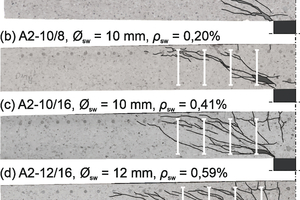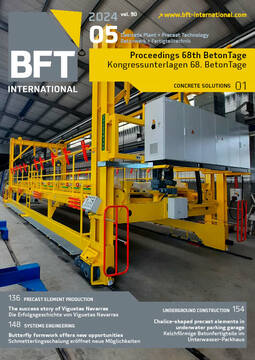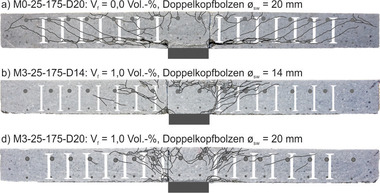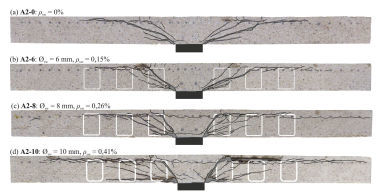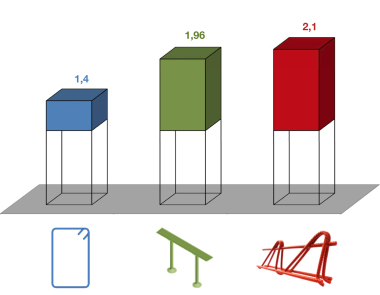Influence of various degrees of punching-shear reinforcement and -elements on punching-shear behavior
The current design concept of Eurocode 2 (EC2) provides contributions of concrete and shear reinforcement for the design of flat slabs with stirrups as punching-shear reinforcement. Here, a reduced concrete contribution is applied constantly, while the anchorage quality of the shear reinforcement is considered for the increasing contribution of shear reinforcement. This approach leads, especially for low and medium shear-force reinforcement ratios, to an underestimation of the punching-shear resistance. In contrast, the new Eurocode 2 (prEC2) includes the design of double-headed studs and improves the determination of the contributions of concrete and shear reinforcement. Due to more pronounced shear cracking with increasing shear reinforcement ratio, the concrete contribution continuously decreases. So far, only a few studies on the punching shear behavior of flat slabs with low and medium shear reinforcement ratios were available. This is because investigations with double-headed studs, until now, have focused primarily on failure on the level of maximum punching shear strength. Whereas the previous project investigated the influence of varying shear reinforcement ratios for stirrups, the current project focuses on the use of double-headed studs and practically relevant shear reinforcement elements in flat slabs by means of 14 tests. Moreover, pull-out tests were conducted for investigating the anchorage behavior of various shear reinforcement elements. In addition to the analysis of the contributions of concrete and shear reinforcement, the investigations allow for distinguishing between the relevant types of failure [see Fig. – without (a), within (b) and (c) and maximum punching shear strength (d)) − and thus provide a significant contribution to an economical design.

